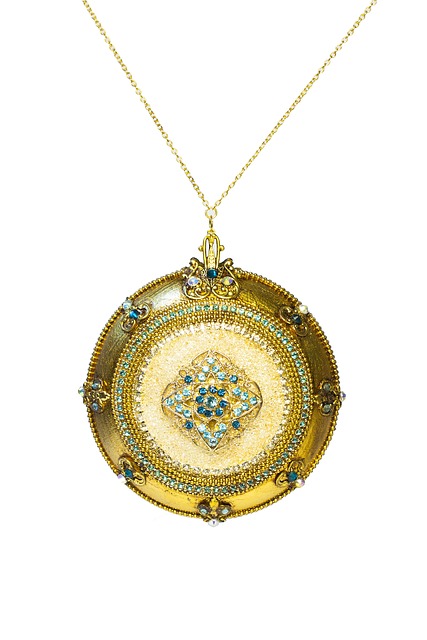

First off, let’s talk about what makes a cable “marine grade.” These cables are designed to withstand harsh saltwater conditions, UV rays, and even the occasional accidental nibble from curious sea critters. Talk about resilience! When you’re looking for longevity, two types really shine: tinned copper cables and high-quality polyvinyl chloride (PVC) sheathing.
Tinned copper is like that friend who can handle anything life throws their way. It resists corrosion from salt and moisture, which means you won’t have to replace it every boating season. Imagine lounging on your boat, the sun sparkling off the water. Having reliable cables lets you enjoy those moments instead of worrying about electrical issues!

Of course, don’t overlook the importance of the installation itself. A well-installed cable, protected from strain and moisture, will outperform a poorly installed one any day. So, when you’re wiring up your boat, take a moment to consider the long game. Remember, investing in quality marine grade cables is like choosing a sturdy sail for smoother journeys ahead.
The Quest for Durability: Unveiling the Longest Lasting Marine Grade Cables
Imagine sailing on a sunny day, ocean waves lapping gently at your hull. Now picture a sudden storm crashing in. This is where high-quality marine cables shine—crafted from top-notch materials that resist corrosion and UV damage, they are your unsung heroes in challenging conditions. The toughest cables often use materials like tinned copper, which is less susceptible to saltwater corrosion compared to regular copper. It’s like choosing a raincoat that actually keeps you dry during a downpour.
You should also consider the insulation. Materials such as polyvinyl chloride (PVC) or cross-linked polyethylene (XLPE) are not just thrown around casually; they are specifically chosen to handle extreme temperatures and protect against abrasion. Think of them as the armor for your cables—providing a shield that keeps your connections secure and operational when you need them most.
But durability isn’t just about material; it’s also about the construction. Cables with a multi-stranded design offer greater flexibility and tensile strength. This means they can bend and twist without breaking—a crucial factor when you’re navigating tight spots or rough waters, just like a gymnast expertly flipping through the air.
Ultimately, investing in the longest lasting marine grade cables is like equipping your vessel with a solid lifeline, ensuring you’re prepared for every nautical adventure, no matter how turbulent the journey may get.
Marine Survival Guide: Top Cables That Weather the Storm
So, what should you look for? First off, think of cables that are not just strong but super durable. Stainless steel cables, for example, are like the warriors of the marine world. They resist rust and corrosion, ensuring they stand strong against saltwater attacks. It’s like having a trusty raincoat during a downpour; you know you’ll stay dry!
Then, there’s the importance of the right size and strength. Just as you wouldn’t wear flip-flops hiking in the mountains, don’t skimp on your cable’s specifications. Look for cables rated for the maximum load they’ll face. Choosing the right diameter can be the difference between setting sail and sinking fast!
Another aspect to consider is flexibility. To put it simply, cables need to bend and twist without breaking. Think of them like a professional dancer, capable of moving gracefully without sacrificing their strength. You’d want cables that can handle the rigors of the sea while remaining flexible enough for various applications.
Lastly, don’t forget about ease of installation. The calmer the seas, the easier it is to manage your gear. Select cables that are user-friendly; it’s all about keeping things smooth sailing, even when the weather tests your resolve. Each cable is an unsung hero, quietly doing its job while you focus on the horizon ahead, ready for whatever waves may come.
Longevity at Sea: Comparing the Best Marine Grade Cables for Long-Term Performance
First off, think of marine-grade cables as the veins of your vessel. They need to withstand saltwater, sunlight, and all the elements nature throws at them. The top options usually come in tinned copper – it’s like dressing your cables in a protective armor. Why? Because tinned copper resists corrosion much better than regular copper, extending the life of your wiring even in the harshest marine conditions.
Next, consider the insulation. Cables with high-quality insulation are your best bet against the wear and tear of the sea. Look for options that use Ethylene Propylene Diene Monomer (EPDM) or Polyvinyl Chloride (PVC). These materials are like sunscreen for your cables, shielding them from UV rays and extreme temperatures, ensuring they perform at their peak over time.
Don’t forget about flexibility! Just as you wouldn’t want to sail in a clunky boat, using stiff cables can lead to damage and breakage. Cables designed for marine use often boast multi-stranded constructions, making them as flexible as a dancer. This adaptability allows them to resist fatigue and wear as they bend and twist with your vessel’s movements.
Finally, always check for certification. A cable might look sturdy, but if it’s not certified for marine use, it’s like using a paper boat in a storm. Look for certifications like ABYC or UL – they’re your guarantee that the cable can withstand long-term performance.
Choosing the right marine-grade cables can truly transform your nautical experience, making your time at sea as seamless as a gentle breeze on a sunny day.
Fishing for Quality: Which Marine Grade Cables Stand the Test of Time?
So, which marine grade cables actually stand the test of time? Look for cables made from tinned copper. This material is like the superhero of the marine world. Tinned copper reduces the chance of corrosion, which is a killer for many cables used in salty, wet environments. You don’t want to end up with a cable that rusts faster than you can catch your first fish!
Another game changer is the insulation. High-quality PVC or cross-linked polyethylene insulation offers excellent resistance to UV rays and moisture. It’s like sunscreen for your cables, protecting them from the harsh marine environment. Picture your cables lounging on a beach, soaking up the sun without a care in the world— that’s the vibe we want.
Flexibility is also key. A stiff cable can be a nightmare when you’re trying to maneuver around the tight spaces on your boat. High-stranded cables, on the other hand, are much more forgiving. They bend and twist without breaking, acting like a seasoned sailor who knows how to adapt to rough seas.
Anchoring Your Investment: The Ultimate Guide to Long-Lasting Marine Grade Cables
Marine-grade cables aren’t your run-of-the-mill wires; they’re specially designed to withstand the harsh effects of saltwater, UV rays, and various weather conditions. Picture them as the superheroes of the marine world, with corrosion-resistant features that prevent rust and wear over time. You wouldn’t want a simple steel cable on your boat, would you? It’s like trying to build a sandcastle in a hurricane! Instead, opt for cables made from materials like stainless steel or synthetic fibers that promise longevity and strength.
Installation might seem daunting, but it’s simpler than assembling your favorite piece of IKEA furniture! Just ensure you have the right tools and bits; everything else will practically fall into place. Use properly sized fittings and ensure tight connections to maximize performance. It’s all about making sure those cables are snug as a bug in a rug.
Plus, don’t underestimate the importance of regular inspections. Think of it like giving your car a routine check-up to keep it running smoothly. A little maintenance goes a long way in preventing unexpected mishaps out on the water, allowing you to focus on what really matters: enjoying your time on your boat without any worries! With the right marine-grade cables, you can truly anchor your investment and sail smoothly for years to come.
